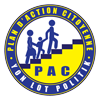In an era where information travels faster than truth, the line between fact and fiction has blurred into a dangerous haze. Fake news is not merely a buzzword; it is a societal cancer metastasizing through democracies, public health systems, and international relations. As Haitian journalist Moise Garcon, Executive Editor of Transparans.net, warns: “When lies go unchallenged, they become the new reality” . This article examines how disinformation campaigns in Haiti, the United States, and Europe…exploit vulnerabilities in media ecosystems, undermine trust in institutions, and demand urgent collective action.
Haiti: Myths, Minerals, and Manipulation
Haiti’s struggle with misinformation is deeply rooted in its socio-political instability. In 2024, a viral WhatsApp video falsely claimed diesel fuel was discovered in Ouanaminthe (Wanament), sparking fears of a Dominican Republic invasion. The footage, later exposed as recycled from a Libyan pipeline rupture, exemplifies how profit-driven actors weaponize national anxieties.
Another persistent myth revolves around Haiti’s supposed iridium reserves. Despite a 2022 government report debunking claims of “trillions in untapped minerals,” conspiracy theories alleging foreign exploitation persist. Garcon notes, “These narratives prey on historical trauma — from colonial exploitation to modern interventionism — to fuel distrust in international aid, even lifesaving missions…
The consequences are dire. Misinformation distracts from systemic issues like crumbling infrastructure. For instance, the Henry Christophe University Campus in Limonade, built with $30 million in Dominican aid, fell into disrepair within a decade. While Prime Minister Joseph Jouthe pledged support, his administration faced criticism for prioritizing “calls for caution” over concrete action against insecurity, a stance Garcon condemns as “passivity masquerading as prudence”.
United States: Election Interference and the “Infodemic”
The 2024 U.S. presidential election became a battleground for foreign disinformation. A viral video depicting Haitian immigrants fraudulently voting in Georgia — later exposed as a Russian operation — aimed to delegitimize democratic processes. U.S. intelligence agencies linked the footage to “Storm-1516”, a Kremlin-linked group notorious for sowing division. Clemson University researchers identified parallels to prior campaigns by the “Russian Foundation to Battle Injustice”, founded by late Wagner Group leader Yevgeny Prigozhin.
Domestic actors also fuel distrust. The Trump administration’s “100 Days of Fighting Fake News” initiative, while debunking claims like ICE deporting U.S. citizens, itself faced accusations of politicizing facts. For example, DHS defended the deportation of MS-13 member Kilmar Abrego Garcia as lawful, yet critics argued such cases were framed to stoke anti-immigrant sentiment .
Meanwhile, COVID-19 misinformation persists. False claims about vaccines and testing reliability — amplified by algorithms prioritizing engagement over accuracy — continue to hinder public health efforts. As the WHO notes, distrust in institutions creates fertile ground for disinformation to thrive.
Europe: Polarization and the “Infodemic” Fallout
Europe’s encounter with misinformation spans geopolitical and public health fronts. During the pandemic, conspiracy theories linking 5G networks to COVID-19 spread rapidly, leading to arson attacks on telecom towers. Sander van der Linden, a Cambridge psychologist, likens misinformation to a virus, arguing that “pre-bunking” — exposing individuals to manipulative tactics — can build immunity.
However, the European Union’s struggle to counter Russian disinformation highlights systemic challenges. In 2024, fabricated narratives accusing Ukraine of bioweapon development resurfaced, echoing Cold War-era propaganda. Such campaigns exploit existing fissures, from vaccine skepticism to anti-NATO sentiment.
Garcon emphasizes, “The solution isn’t just fact-checking; it’s addressing the root causes of distrust. When people feel abandoned by their governments, they turn to alternative narratives — even dangerous ones”.
Combating the Crisis: Strategies for Resilience
1. Media Literacy as a Vaccine: Educational initiatives teaching critical thinking and source verification are vital. The WHO advocates for partnerships with community leaders to amplify credible voices.
2. Algorithmic Accountability: Social platforms must prioritize accuracy over engagement. Van der Linden’s Bad News game, which simulates disinformation tactics, shows promise in inoculating users.
3. Transparency in Governance : As Garcon argues, “Governments must counter lies with action, not just rhetoric.” Rebuilding trust requires addressing systemic inequities that fuel conspiracy theories.
Fake news is not a passing storm but a climate crisis for democracy. From Haitian oil myths to Russian election meddling, the stakes are universal: without vigilance, lies become the scaffolding of reality. As Moise Garcon asserts, “Silence in the face of deception is complicity. The fight for truth is the fight for our future” . The path forward demands collective resolve — not just to debunk falsehoods, but to rebuild the trust they erode.
References
– Transparans.net, “Insécurité : le chef du CSPN se déresponsabilise-t-il ?” (2020)
– BBC, “US officials say Russians faked ‘Haitian voters’ video” (2025)
– LinkedIn, “Haiti’s Fake News Problem” by Johnny Celestin (2024)
– WHO, “Disinformation and public health” (2024)
– Boston Review, “The Fake News about Fake News” (2024)
– U.S. DHS, “100 Days of Fighting Fake News” (2025)
The post The Metastasis of Misinformation: How Fake News Erodes Democracy and Public Trust appeared first on Transparansmm.

